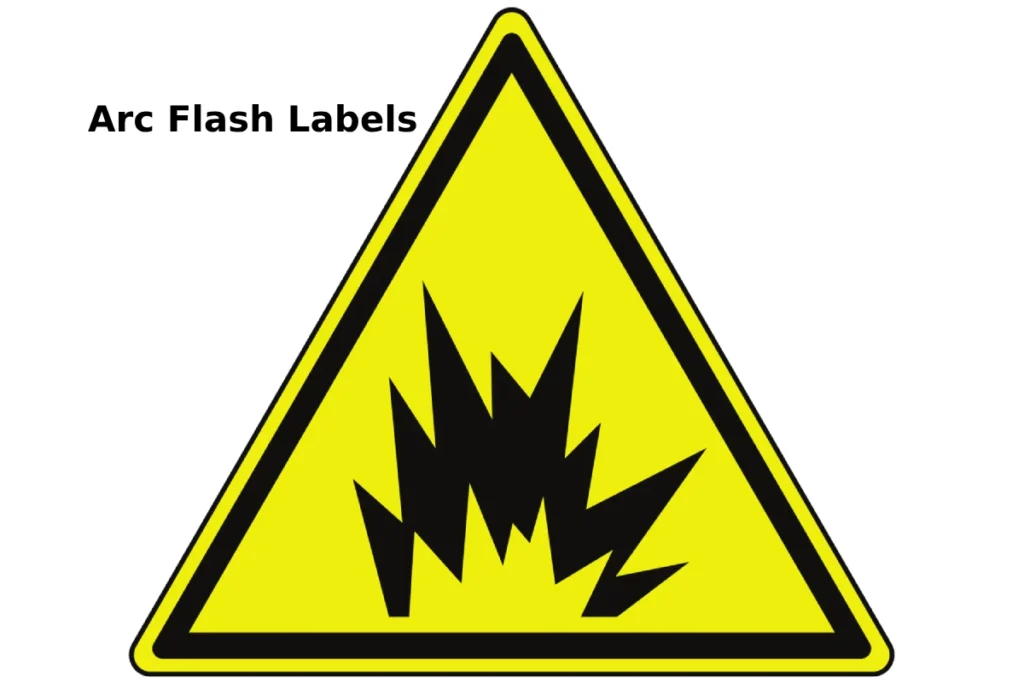Arc Flash Labels – Keeping employees safe around live equipment definitely takes serious caution, as arc flashes are fairly common among electricians. Still, a lot of accident risks can become lowered quite a bit with the right awareness and protections in place. Running arc tests and setting up proper sign programs helps clue employees in on built-in dangers.
By clearly laying out exposure risks and necessary gear, arc flash labels allow workers to safely work in electrical environments. Let’s take a look at how making labeling a top priority backs both staff and the company’s success.
The Dangers of Arc Flash
An arc flash refers to a powerful blast of light and heat generated by a rapid release of energy due to a short circuit or other fault in an electrical system. These events produce temperatures higher than the sun’s surface and release shock waves capable of inflicting severe burns.
Beyond immediate harm, arc flash incidents may also cause blindness, hearing loss, and other long-term issues. Given electrical energy’s ubiquitous role in workplaces worldwide, anyone near energized equipment faces arc flash risks daily without proper precautions.
Understanding Arc Flash Labels
To raise awareness and highlight potential exposure levels, the National Fire Protection Association recommends utilizing arc flash label adhering to NFPA 70E criteria. Proper labels display the arc flash boundary, predicted arc temperature, required personal protective equipment based on risk assessments, and other details.
They inform workers of inherent dangers and the protective measures necessary when performing various tasks. Well-designed labels effectively communicate risks in a quick, easy-to-understand manner, allowing employees to take informed safety actions.
Establishing a Compliant Labeling Program
Initiating an arc flash labeling program requires performing an arc flash risk assessment and calculations per NFPA 70E standards. Employing trained assessment professionals ensures accurate evaluations accounting for your facility’s unique electrical infrastructure and work practices.
Labels produced from these assessments match the National Electrical Manufacturers Association standardized design for consistency. Proper placement around energized equipment keeps safety information readily available. Routine audits and upgrades when work conditions change maintain program relevance over the long run.
Benefits of Prioritizing Workplace Electrical Safety
Besides fulfilling regulations, prioritizing worker safety yields significant benefits. Empowered with awareness, employees face fewer uncertainties when handling live components. Lower risks correlate to decreased injury occurrences, medical expenses, and unscheduled downtime.
Morale improves as staff feels respected through a commitment to their wellbeing. Communities also benefit as family members experience less trauma from preventable accidents. Overall, labeling represents a wise investment in enhancing productivity and protecting your greatest asset – your people.
Moving Forward with Confidence
While arc flashes remain an inherent risk for those near energized systems, establishing due care through labeling mitigates dangers substantially. With proper risk assessments and signage adhering to NFPA 70E, your facility demonstrates its emphasis on safety culture. Employees gain a situational understanding for navigating electrical work more prudently.
Communities also stay intact as fewer families endure pain from hazards left unaddressed. Start empowering your workforce today by contacting an expert to evaluate your facility’s arc flash risks and implement the solution providing peace of mind for all.
Also Read:- Work Breakdown Structure(WBS) – Definition, Diagram, and More


